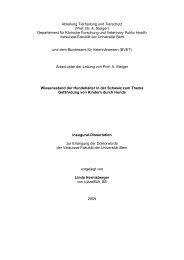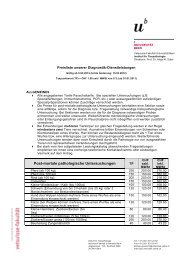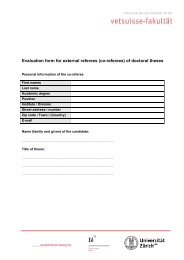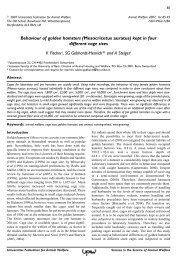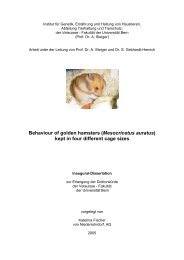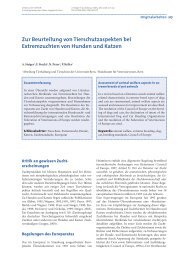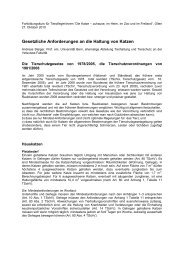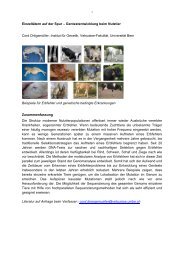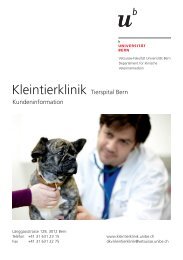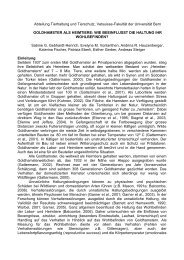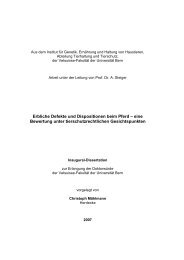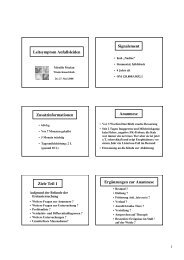Lifespan and Causes of Death in the Irish Wolfhound - Vetsuisse ...
Lifespan and Causes of Death in the Irish Wolfhound - Vetsuisse ...
Lifespan and Causes of Death in the Irish Wolfhound - Vetsuisse ...
You also want an ePaper? Increase the reach of your titles
YUMPU automatically turns print PDFs into web optimized ePapers that Google loves.
5 Results <strong>of</strong> Past Studies Revisited<br />
5.1 Re-analysis <strong>of</strong> Bernardi (1986) <strong>and</strong> Prokopenko (1998)<br />
5.1.1 Data Merg<strong>in</strong>g<br />
As discussed <strong>in</strong> chapters 3.1.3.1 <strong>and</strong> 3.1.3.3, <strong>the</strong> orig<strong>in</strong>al data <strong>of</strong> Bernardi (1986)<br />
were available to us, consist<strong>in</strong>g <strong>of</strong> n=582 <strong>in</strong>dividuals <strong>in</strong> anonymised form. Also<br />
available were <strong>the</strong> orig<strong>in</strong>al data <strong>of</strong> Prokopenko (1998), consist<strong>in</strong>g <strong>of</strong> n=161<br />
<strong>in</strong>dividuals <strong>in</strong> partially anonymised form. When adjusted for Cohort Bias, n=327<br />
<strong>in</strong>dividuals from Bernardi (1986) <strong>and</strong> n=72 <strong>in</strong>dividuals from Prokopenko (1998)<br />
rema<strong>in</strong>ed. <strong>Causes</strong> <strong>of</strong> death were classified as discussed <strong>in</strong> chapter 4.3<br />
ANOVA showed that lifespan data (p=0.75), distribution <strong>of</strong> causes <strong>of</strong> death (p=0.99),<br />
sex (p=0.91) <strong>and</strong> castration frequency (p=0.37) were not significantly different <strong>in</strong> both<br />
populations. A General L<strong>in</strong>ear Model analysis for <strong>the</strong>se four variables analysed by<br />
population resulted <strong>in</strong> a p=0.86 <strong>and</strong> no significant s<strong>in</strong>gle variable effects/<strong>in</strong>teractions.<br />
Therefore, <strong>the</strong> data from both studies were merged <strong>in</strong>to one database for analysis.<br />
5.1.2 Population Structure<br />
The database consisted <strong>of</strong> n=399 dogs, 186 males (173 <strong>in</strong>tact/13 castrated) <strong>and</strong> 213<br />
females (138/75), born between 1954 <strong>and</strong> 1986. Gender distribution was not<br />
significantly different from an equal distribution model (p=0.18, chi-square=1.82).<br />
Significantly more females than males had been castrated (p



